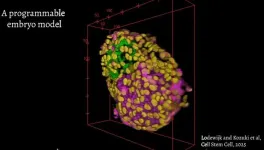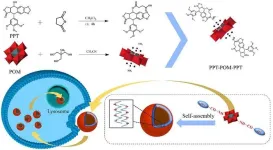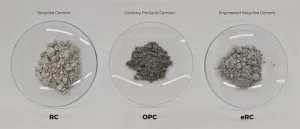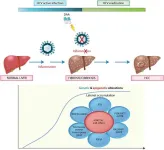(Press-News.org) MIAMI, FLORIDA (STRICTLY EMBARGOED UNTIL MARCH 20, 2025, AT 11 A.M. EDT) – Since 2021, when lung cancer screening guidelines began to include younger people and those with a lower smoking history, the number of screenings climbed, but significant gaps remain, especially among people with limited access to healthcare, according to a new study led by researchers at Sylvester Comprehensive Cancer Center, part of the University of Miami Miller School of Medicine.
"The updated guidelines substantially increased lung cancer screenings overall, even as cancer screenings declined during the COVID-19 pandemic," said Tracy E. Crane, Ph.D., R.D.N., associate professor and co-leader of the Cancer Control Research Program at Sylvester. "However, discrepancies for who is screened persist, underscoring the importance of addressing structural barriers in rural and underserved populations." Crane is senior author of the study, published in the March 20 issue of JAMA Oncology.
Lung cancer is the leading cause of cancer deaths in the United States for both men and women, and screenings can save lives by finding cancer early and making treatment more effective. Low-dose computed tomography (CT) is a relatively new screening tool for early-stage lung cancer.
The U.S. Preventive Services Task Force (USPSTF) issued its first lung cancer screening guidelines in 2013. These screens are quick and painless. In 2021, the USPSTF updated the guidelines to start screening at 50 instead of 55 and to include those with a lower smoking history (20 or more pack-years instead of 30 or more). A pack-year is calculated by multiplying the number of years an individual smoked by the number of packs smoked per day.
First author LaShae D. Rolle, M.P.H., C.PH., a Sylvester doctoral research fellow, used data on health-related risks and behaviors from a nationally representative CDC survey. The dataset is large, but habits and risks are self-reported. Participants may underestimate how much they've smoked or be ashamed to report their habits accurately.
Rolle found that, of the people classified as high-risk before the guidelines changed, only 15.43% were up to date on their lung cancer screenings. The year after the guidelines changed, this jumped to 47.08% of those eligible were up to date — better, but still less than half. The numbers were lower in uninsured patients, those without a primary care provider, and those who live in rural areas.
Many Barriers to Care
Because patients without a primary care provider were much less likely to get screened, one barrier may be the requirement for a referral. In other cases, the barrier may be knowledge — these patients may not even know they're eligible for screening.
Other barriers include the cost of care. Rolle found that health insurance pays for 97% of lung cancer screenings. Without insurance, a scan can cost hundreds of dollars, in addition to paying for a doctor's visit to obtain a referral.
There are often options to access free or low-cost scans. Many states and nonprofits have programs to defer costs and increase access.
"But screening is not a one-time deal. Patients should get a scan annually, and results may require additional testing," study author Coral Olazagasti, M.D., a Sylvester assistant professor of clinical medical oncology, said. "The costs come not only from the scan but the follow-up.”
"A person may say — I don't have the money; I don't have insurance. But, no one thinks they have cancer," Rolle said. "I am a cancer survivor myself. I was diagnosed at 26. I understand how easy it is to brush off a screening, especially among those choosing between having food or getting screened.”
In rural areas, screening facilities may be hundreds of miles apart, making travel a barrier for many. Mobile lung cancer screening units can bring access to rural areas but cost up to $2 million.
Ways to Close the Gap
At Sylvester, community outreach teams work to close the disparities in lung cancer screenings.
“We have been identifying the places in our catchment area where the highest-risk patients are not getting screened. We then head over in the Game Changer Bus and educate and counsel the public on lung cancer screenings," said study author Estelamari Rodriguez, M.D., M.P.H., Sylvester's associate director of community outreach for thoracic oncology.
Other ways to increase screening rates among minority populations include patient navigators who can help educate patients, schedule their scans and arrange transportation.
“Partnering with local community organizations, churches and health workers has proven effective in promoting lung cancer screening," study author Gilberto Lopes, M.D., Sylvester's chief of the division of medical oncology, said. "Trusted local figures can help overcome mistrust and fear while providing culturally tailored education."
The gaps in access to lung cancer screening are personal to Rolle. "I was lucky enough to catch my breast cancer early, and now I'm cancer-free. I would love for others to get screened so they can also catch cancer early, too," she said.
# # #
Authors: A complete list of authors is available in the paper.
Article Title: USPSTF Lung Cancer Screening Guidelines and Disparities in Screening Adherence
DOI: 10.1001/jamaoncol.2025.0230
Disclosures: Conflict of interest disclosures are available in the article.
# # #
END
A team of researchers from Cleveland Clinic Genomic Medicine share insights from an early set of 19,000 patients to receive immune checkpoint inhibitor treatments for colorectal cancer in the U.S.
The report comes from the laboratory of Stephanie Schmit, PhD, MPH, and was published in JAMA Network Open. It serves as an opportunity to better understand how immune checkpoint inhibitor treatments, including PD-1 and PD-L1 inhibitors, work in a larger population that reflects real-world settings. Dr. Schmit collaborated with a team of ...
The earliest days after fertilization, once a sperm cell meets an egg, are shrouded in scientific mystery.
The process of how a humble single cell becomes an organism fascinates scientists across disciplines. For some animals, the entire process of cellular multiplication, generation of specialized cells, and their organization into an ordered multicellular embryo takes place in the protective environment of the uterus, making direct observation and studies challenging. This makes it difficult for scientists to understand what can go wrong during that process, and how specific risk factors and the surrounding environment may prevent ...
Boston – An international team of clinical collaborators, led by physician scientists from Dana-Farber Cancer Institute, performed a first-ever clinical test of the targeted therapy avapritinib in pediatric and young patients with a form of high-grade glioma. They found that the drug, already FDA-approved for certain adult cancers, was generally safe and resulted in tumor reduction visible on brain scans, as well as clinical improvement, in 3 out of 7 patients.
The study was published in Cancer Cell.
Pediatric-type high-grade gliomas are currently incurable brain tumors with median survival times less than 18 months after initial diagnosis.
Avapritinib ...
POMs are a class of inorganic metal-oxygen cluster compounds with broad-spectrum antitumor potential. However, their strong hydrophilicity and poor lipophilicity result in insufficient cell membrane permeability, and high doses are required to achieve therapeutic effects, which severely limits their clinical application. To address this challenge, the research team proposes a covalent modification strategy: the construction of an amphipathic drug molecule PPT-POM-PPT by linking the hydrophobic anti-tumor drug Podophyllotoxin (PPT) with hydrophilic POMs. This molecule ...
Circadian rhythms are endogenous time-keeping mechanisms that regulate physiological processes in response to external light-dark cycles. These rhythms are orchestrated by the suprachiasmatic nucleus (SCN) in the hypothalamus and involve a network of genes, including CLOCK and BMAL1, that influence metabolism, immune responses, and cell proliferation. Recent research has highlighted the crucial role of circadian rhythms in tumor biology, demonstrating that their dysregulation contributes to tumorigenesis, progression, and metastasis. Additionally, circadian rhythms influence the tumor immune microenvironment and the ...
Type 2 diabetes mellitus (T2DM) is a chronic metabolic disorder with a rapidly increasing global prevalence. It is primarily characterized by insulin resistance, β-cell dysfunction, and impaired glucose homeostasis. Emerging research suggests that flavonoids, a diverse group of plant-derived polyphenols, may offer therapeutic potential in managing T2DM. These compounds exert antidiabetic effects through multiple mechanisms, including improving insulin sensitivity, enhancing β-cell function, modulating ...
INDIANAPOLIS -- A large scale study by researchers from the Regenstrief Institute and the Indiana University School of Medicine has found that patient pain upon arrival to the Emergency Department (ED) as well as the use of hallway beds and radiology studies in the ED are associated with patient experience, although not in the same ways.
The study’s tens of thousands of observations including clinical and operational data revealed that regardless of how promptly or successfully pain was treated in the ED, the amount of pain the patient was in when they arrived was associated with patient experience ...
Giving a second life to construction materials after demolition, engineers at the University of São Paulo and Princeton have developed an approach for recycling cement waste into a sustainable, low-carbon alternative that is comparable in performance to the industry standard.
In addition to lowering the carbon intensity of the cement and concrete industry, the process could enable new uses for construction and demolition waste, of which concrete is a significant component. In 2018 in the United States, the total ...
Hepatitis C virus (HCV) infection remains a major global health burden, affecting millions worldwide and contributing significantly to hepatocellular carcinoma (HCC) development. The introduction of direct-acting antivirals (DAAs) has revolutionized HCV treatment, achieving high rates of sustained virologic response (SVR) and reducing HCV-associated morbidity and mortality. Despite these advancements, the risk of HCC persists in certain populations, particularly those with pre-treatment cirrhosis or advanced fibrosis (F3). This review examines the ...
The Lupus Research Alliance (LRA) is proud to announce the inaugural recipients of the new Targeted Research Program on Engineered Cell Therapies for Lupus (TRP-ECT) to support the development and mechanistic understanding of safe and accessible next-generation engineered cell therapies for people with lupus. Engineered cell therapies, such as CD19-targeted chimeric antigen receptor (CAR) T cells, involve reengineering a patient’s own T cells to recognize and attack cells that cause disease.
The LRA established this program to build upon the promise already shown for engineered cell therapies in treating and potentially curing lupus, including ...







